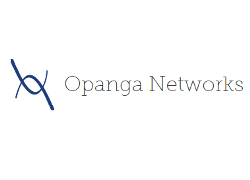5G ‘Mega Elephant Flows’ will pummel mobile networks, says Seattle-based wireless specialist

Opanga Networks is extending its partnerships with major mobile network providers worldwide to enable 5G services as bandwidth demand continues to double year-over-year.
While 5G will empower OTT companies to deploy augmented/virtual reality, infotainment, and connected cars, these applications will generate what the company calls Mega Elephant Flows and drastically increase the need for RAN densification via Elephant Flow management, the cornerstone of Opanga technology.
5G will enable new applications currently in their infancy in 4G environments, and the potential impact of these applications on 5G network performance is still unknown. This includes Augmented Reality applications aiming to allow users to remotely attend live concerts, engage in interactive gaming and entertainment in Augmented Reality environments while on the move, 3D design and art, real-time health and technological sensors, and other applications. These new rich applications will act as pivotal revenue-generating services required to justify CAPEX spend on 5G networks.
“Current Elephant Flows in 4G networks—created by activities such as streaming videos from YouTube—require 1 to 3 Mbps per second, degrading the quality of experience for the majority of users on applications such as email, Twitter and Facebook,” says John Burnette, CTO, Opanga. “5G network buildout expense will demand significant new revenue streams from richer applications for streaming Augmented Reality and 8k streaming video. These new applications are going to require a minimum of 10s of megabits of data per second, creating Mega Elephants.”
Currently, operators work to deploy 5G NR NSA/SA, new spectrum bands, and small cells on the RAN side of the network; the mobile network core is also transforming from legacy hardware appliances into dynamic intelligent virtual software solutions. This new core architecture enables RAN awareness and software densification innovations to be delivered in the core, which will be vital to handle this stampede of Mega Elephants over 5G networks.
While 5G promises to supply increased speeds necessary for rich applications and IoT, the required spectrum will not be available to support Mega Elephant Flows without software intelligence to optimise them. “The spectrum being made available for 5G will be two to three times the spectrum deployed by operators today. However, Mega Elephants will require 10-20x more bandwidth than the Elephant Flows seen on 4G networks,” says Burnette.
“That’s why, if we look at the importance of RAN densification and Elephant Flow management in 4G networks, which is already proven, we can see how critical it will be to 5G networks. Without software intelligence in the mobile core, as soon as you deploy 5G networks, these new applications for Augmented Reality and HDR video will create Mega Elephant Flows, crushing the performance of narrow band (NB) IoT applications that share the spectrum.”
Opanga technology reportedly allows service providers to manage Elephant Flows by optimising their transmission before they go into the RAN, preserving the efficiency of spectral resources. Extensively deployed on 4G networks at present, Opanga technology was developed with 5G in mind.
“Our technology is already proven in 4G networks, but it is equally applicable to 5G and will be fundamental when Mega Elephant applications are launched,” Burnette adds. “We are arming the world’s largest mobile network providers with the tools needed to manage Mega Elephants Flows before 5G even arrives.”
Comment on this article below or via Twitter @IoTGN
